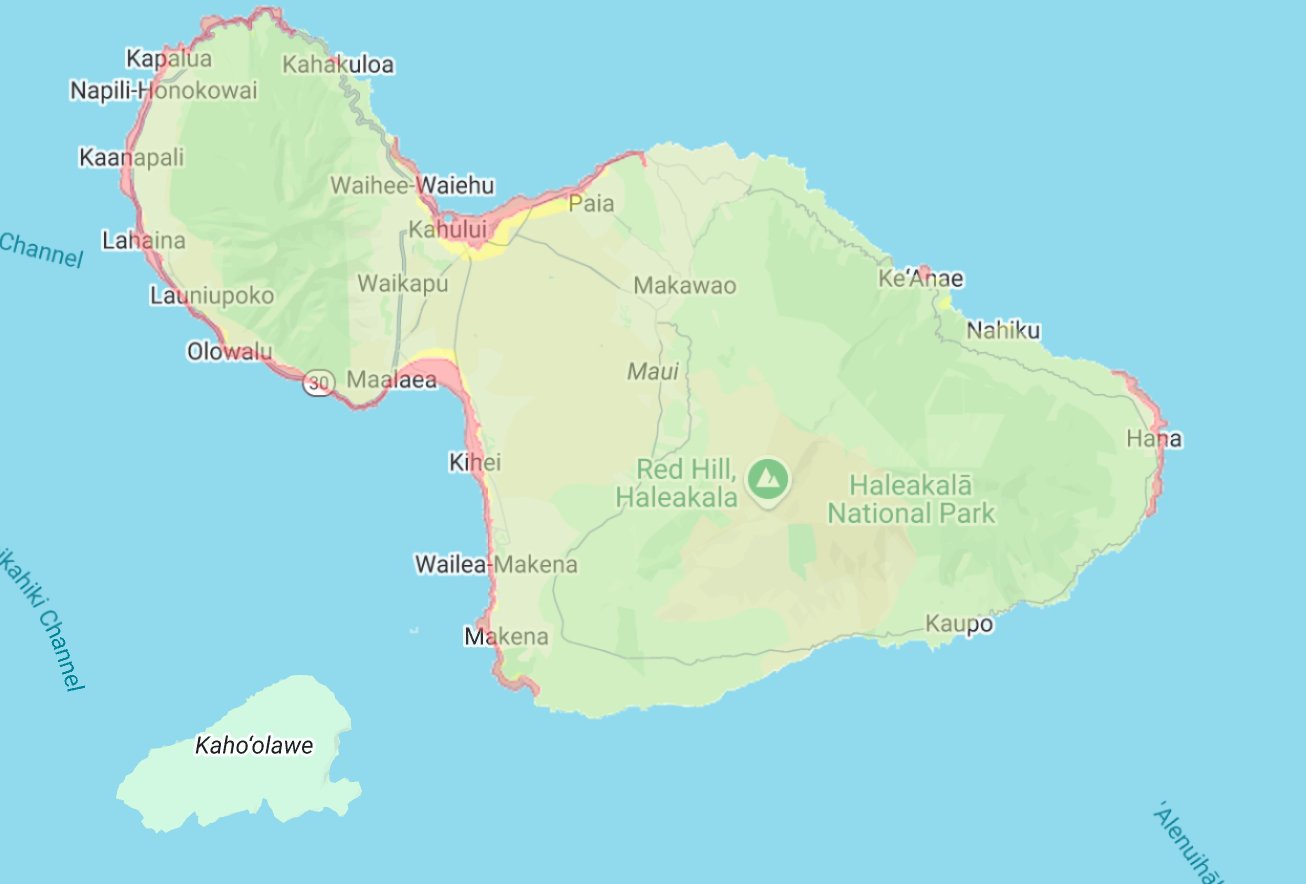
 The tsunami evacuation map is shown for Maui. Red indicates tsunami evacuation zones, while yellow indicates extreme evacuation zones.
The tsunami evacuation map is shown for Maui. Red indicates tsunami evacuation zones, while yellow indicates extreme evacuation zones.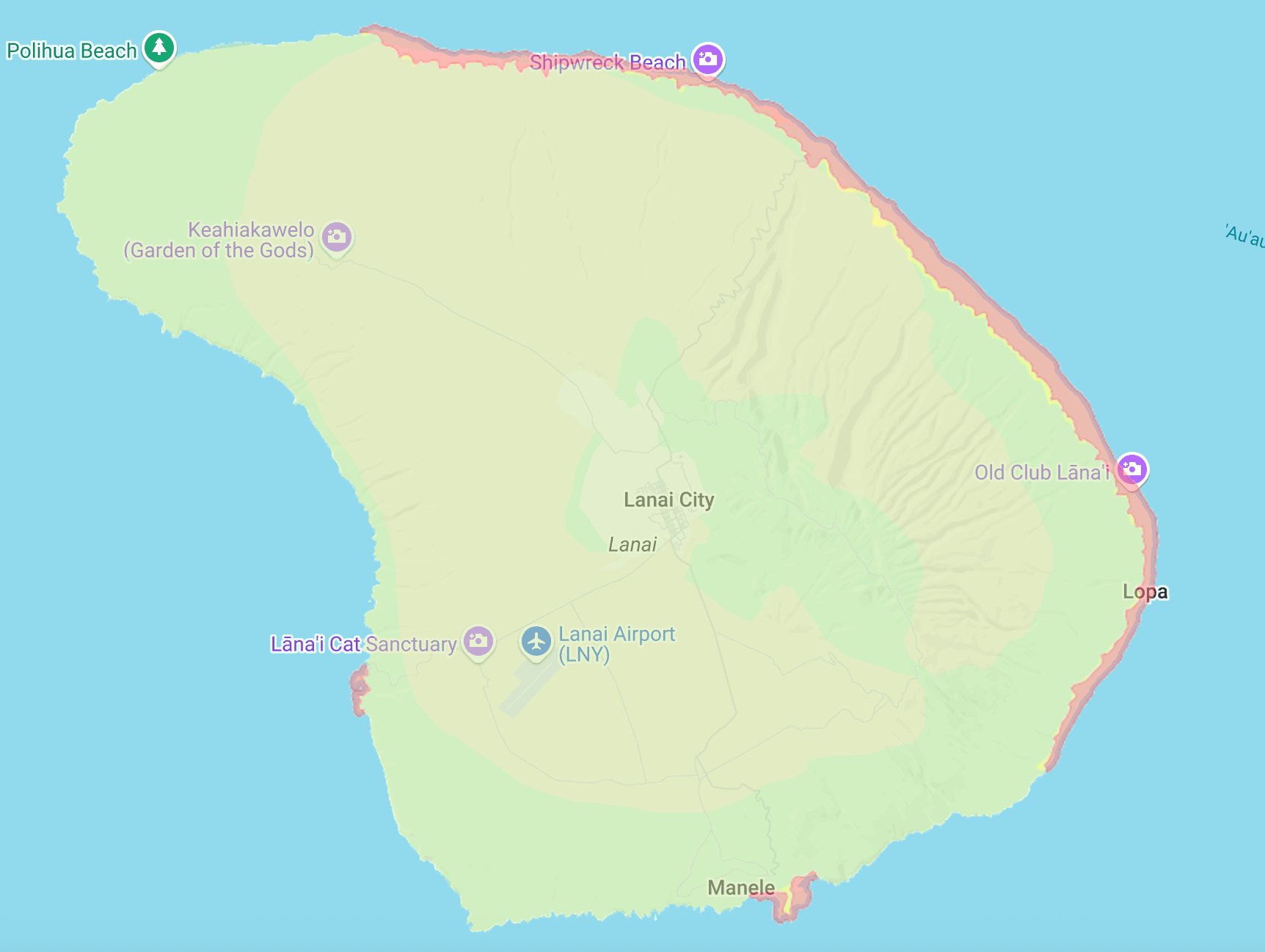
 The tsunami evacuation map is shown for Lana’i. Red indicates tsunami evacuation zones, while yellow indicates extreme evacuation zones.
The tsunami evacuation map is shown for Lana’i. Red indicates tsunami evacuation zones, while yellow indicates extreme evacuation zones.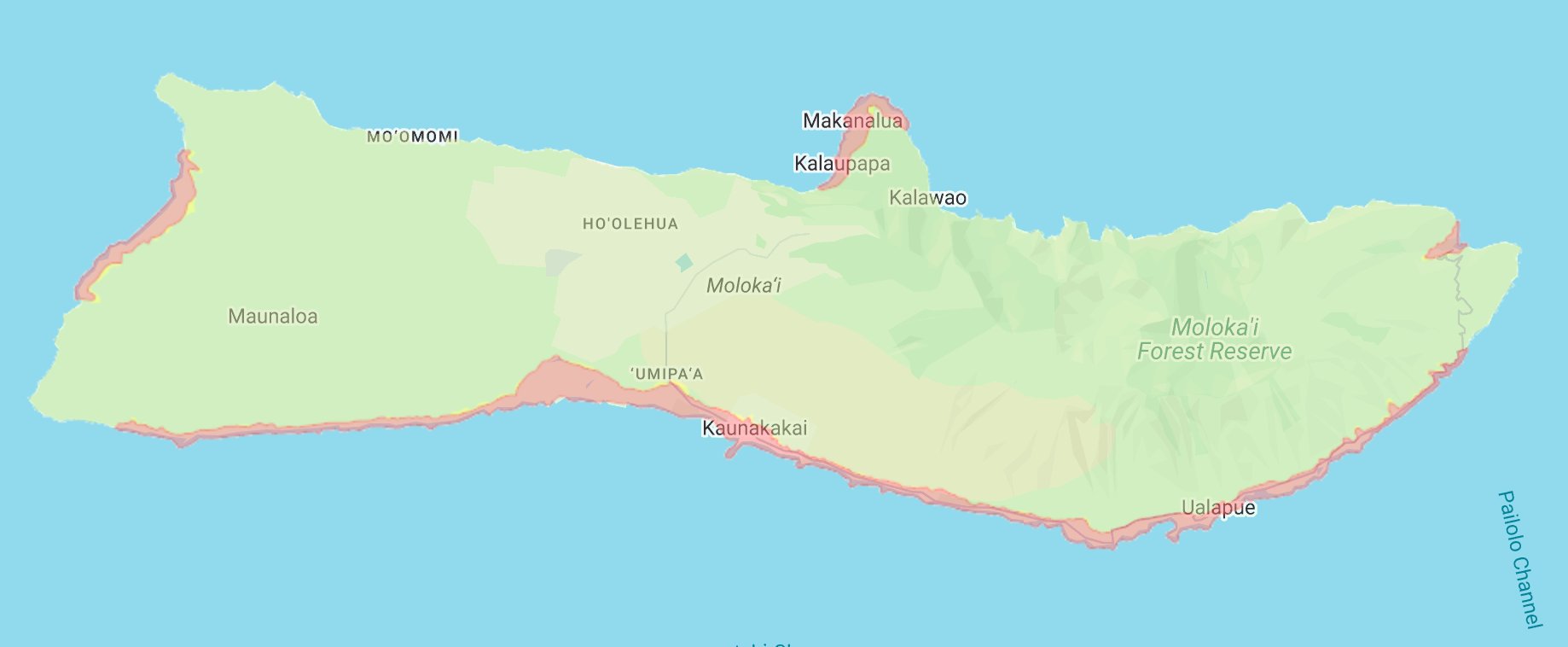
 The tsunami evacuation map is shown for Moloka’i. Red indicates tsunami evacuation zones, while yellow indicates extreme evacuation zones.
The tsunami evacuation map is shown for Moloka’i. Red indicates tsunami evacuation zones, while yellow indicates extreme evacuation zones.
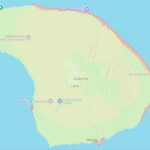
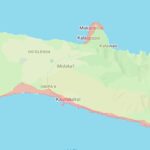
Gov. Josh Green warned that “significant damage” is expected on the coastlines as the first wave from an 8.8-magnitude earthquake off Russia’s southeastern coast approached the islands on Tuesday night.
The earthquake struck shortly before 1:30 p.m. Hawai‘i time at a depth of about 12 miles, according to the U.S. Geological Survey.
Get more stories like these delivered straight to your inbox. Sign up for the Hawai‘i Journalism Initiative’s weekly newsletter:
A tsunami warning was issued by the National Weather Service at about 2:45 p.m., with waves expected to hit Kaua‘i’s north shore first at around 7:10 p.m. and reach Maui County by as early as 7:17 p.m. A warning means that a tsunami has been generated and could cause damage along the coast, and that urgent action should be taken to protect lives and property.
“God willing, these waves will not hurt us, but you have to assume that they will be life threatening,” Green said during a news conference on O‘ahu shortly after 5 p.m.
Sirens went off across the state at 5:10 p.m., 6:10 p.m. and 6:40 p.m. ahead of the first wave’s arrival.
Officials were tracking the tsunami as it crossed the Pacific. At a second news conference shortly after 6 p.m., Green said that buoys off Midway Atoll indicated that the wave measured 6 feet from peak to trough, “so a 3-foot wave riding on top of the ocean.” He said it would likely “wrap around the islands,” causing waves on opposite ends such as Hilo and Kona, and that people should be safe and expect “significant damage along the coastlines.”
The governor urged people to stay off the beaches and away from harbors, rivers or low-lying areas. He urged people in evacuation zones to get to higher ground or go up four stories if they are in a building. Tsunami evacuation zones are available at ready.hawaii.gov.
“We will only give the all clear when we feel there is total safety,” Green said.
Maj. Gen. Stephen Logan, adjutant general of the Hawai‘i Department of Defense, said that preparations were ongoing across the state. The Hawai‘i National Guard had placed liaison officers in every county’s emergency management agency “to create a near-real time response capability.”
High-water vehicles and aircraft had also been activated, with the capability to do search and rescue or transport people to hospital facilities as needed.
On Kaua‘i, the first island expected to receive the wave, the public is being urged to avoid Hanalei Bay to allow people to evacuate, and Wailua Bridge is being kept open, Logan said.
On Maui, state highways crews were staging vehicles and equipment across the island. No flights were going in or out of Kahului Airport, according to the Department of Transportation.
On Moloka‘i, Kalaupapa Airport staff were ready to evacuate to the lighthouse.
On Hawai‘i island, commercial operations have been suspended at Hilo Airport to allow for evacuations from Keaukaha.
The Coast Guard has also closed all major ports, and ships have been ordered out to sea.
“We’re not out of the woods yet,” Logan said shortly after 6 p.m. “We’re collecting data as the wave or the energy passes through some of the other islands. We’re in constant contact with all of our partners.”
Hawai‘i Emergency Management Agency Administrator James Barros urged people to evacuate safely and not to panic. He said the counties are working to open shelters for folks who are evacuating.
Maui Veterans Highway was congested as residents hurried to evacuate on Tuesday afternoon. The Maui Police Department advised people to use Cane Haul Road toward Hansen and Pulehu roads to get to Kula.
Maui County said at 6:30 p.m. that shelters were open at the Lahaina Civic Center social hall, Lahaina Intermediate School, Lahainaluna High School, Moloka‘i High School, Kīhei Community Center, Velma McWayne Santos Center, Hāna High School and the Hannibal Tavares Pukalani Community Center. All parks and facilities in tsunami evacuation zones have been closed, including Kepaniwai Park.
Tourists were asked to follow their hotel or lodging plans for tsunami evacuation protocol.
The county also paused some public services out of an abundance of caution.
The Maui Bus ended operations by 6:30 p.m. or earlier based on the route. Riders can visit mauibus.org or call Roberts Hawai‘i dispatch at (808) 871-4838 for more information.
The county also shut down water valves along coastal areas of Waihe‘e, Waiehu, Wailuku, Kahului, Mā‘alaea, Kīhei, Wailea, Mākena, Lahaina, Nāpili, Hāna and Moloka‘i. Residents and visitors in those areas will experience low or no pressure until the all clear is signaled and the valves are reopened, the county said. For more information, contact the Department of Water Supply at [email protected] or (808) 270-7633.
Several wastewater pump stations and facilities in Lahaina, Kīhei and Central Maui will shut down to prevent damage, the county said. All residents connected to the county’s wastewater system in those areas are asked to limited toilet flushing and bathing until further notice to help prevent or reduce the amount of raw wastewater discharged to the county during the emergency. For questions, call the Wastewater Division at (808) 270-7417.
The Maui Emergency Management Agency call center is open and can be reached at (808) 270-7285. The public can also download the Genasys Protect app and get updates through MEMA alerts at www.mauicounty.gov/MEMA.
After the 9.0-magnitude earthquake and tsunami in Japan in 2011, Green recalled that waves as high as 7 feet hit Maui, causing $7.5 million in damage.
“Because we were thoughtful and smart and calm — and we should all be calm as we evacuate, and we must evacuate from the inundation area — there were no casualties,” Green said.
This is a developing story and will be updated.
